Signaling Pathways
The antibody-drug conjugate (ADC), a humanized or human monoclonal antibody conjugated with highly cytotoxic small molecules (payloads) through chemical linkers, is a novel therapeutic format and has great potential to make a paradigm shift in cancer chemotherapy. The three components of the ADC together give rise to a powerful oncolytic agent capable of delivering normally intolerable cytotoxins directly to cancer cells, which then internalize and release the cell-destroying drugs. At present, two ADCs, Adcetris and Kadcyla, have received regulatory approval with >40 others in clinical development.
ADCs are administered intravenously in order to prevent the mAb from being destroyed by gastric acids and proteolytic enzymes. The mAb component of the ADC enables it to circulate in the bloodstream until it finds and binds to tumor-specific cell surface antigens present on target cancer cells. Linker chemistry is an important determinant of the safety, specificity, potency and activity of ADCs. Linkers are designed to be stable in the blood stream (to conform to the increased circulation time of mAbs) and labile at the cancer site to allow rapid release of the cytotoxic drug. First generation ADCs made use of early cytotoxins such as the anthracycline, doxorubicin or the anti-metabolite/antifolate agent, methotrexate. Current cytotoxins have far greater potency and can be divided into three main groups: auristatins, maytansines and calicheamicins.
The development of site-specific conjugation methodologies for constructing homogeneous ADCs is an especially promising path to improving ADC design, which will open the way for novel cancer therapeutics.
References:
[1] Tsuchikama K, et al. Protein Cell. 2016 Oct 14. DOI:10.1007/s13238-016-0323-0.
[2] Peters C, et al. Biosci Rep. 2015 Jun 12;35(4). pii: e00225. doi: 10.1042/BSR20150089.
Targets for Signaling Pathways
- Proteases(29)
- Apoptosis(864)
- Chromatin/Epigenetics(15)
- Metabolism(336)
- MAPK Signaling(26)
- Tyrosine Kinase(73)
- DNA Damage/DNA Repair(49)
- PI3K/Akt/mTOR Signaling(38)
- Microbiology & Virology(42)
- Cell Cycle/Checkpoint(166)
- Ubiquitination/ Proteasome(24)
- JAK/STAT Signaling(10)
- TGF-β / Smad Signaling(22)
- Angiogenesis(59)
- GPCR/G protein(3)
- Stem Cell(19)
- Membrane Transporter/Ion Channel(161)
- Cancer Biology(366)
- Endocrinology and Hormones(127)
- Neuroscience(366)
- Obesity, Appetite Control & Diabetes(8)
- Peptide Inhibitors and Substrate(1)
- Other Signal Transduction(96)
- Immunology/Inflammation(909)
- Cardiovascular(59)
- Vitamin D Related(0)
- Antibody-drug Conjugate/ADC Related(0)
- PROTAC(212)
- Ox Stress Reagents(24)
- Others(4058)
- Antiparasitics(6)
- Toxins(62)
Products for Signaling Pathways
- Cat.No. Product Name Information
-
GC63267
α-Chaconine
α-Chaconine inhibits the expressions of COX-2, IL-1β, IL-6, and TNF-α at the transcriptional level.
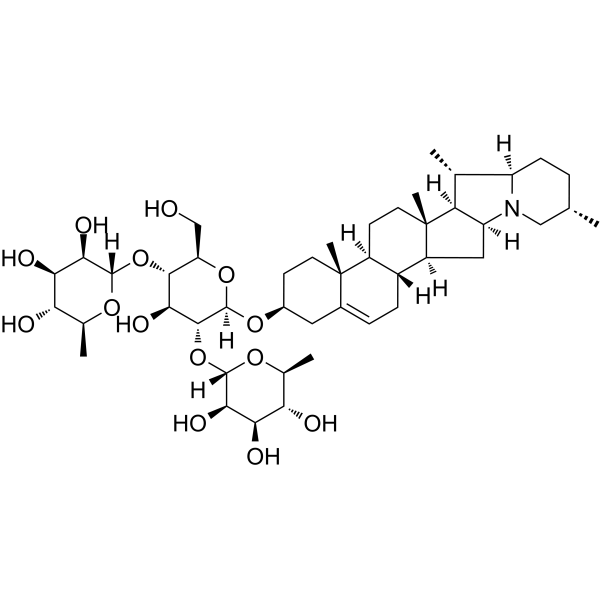
-
GC66197
α-?Terpinyl acetate
α-Terpinyl acetate is a monoterpene ester isolated from Laurus nobilis L. essential oil. α-Terpinyl acetate is a competitive P450 2B6 substrate which binding to the active site of P450 2B6 with a Kd value of 5.4 μM.
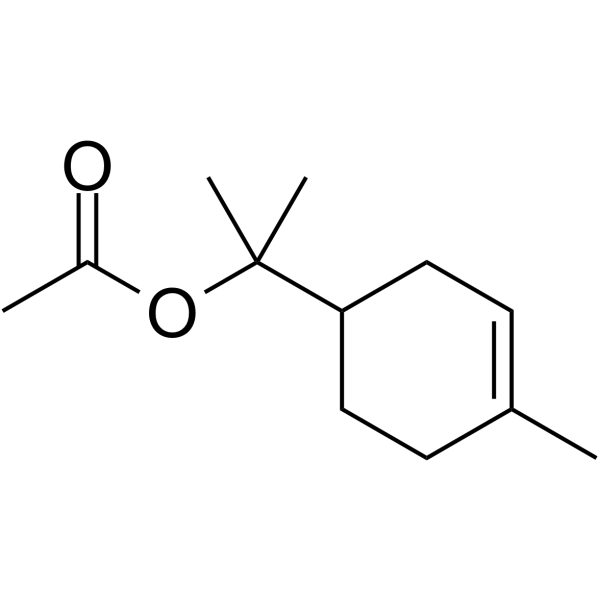
-
GC65446
α-Amyrin acetate
α-Amyrin acetate, a natural triterpenoid, has anti-inflammatory activity, antispasmodic profile and the relaxant effect.
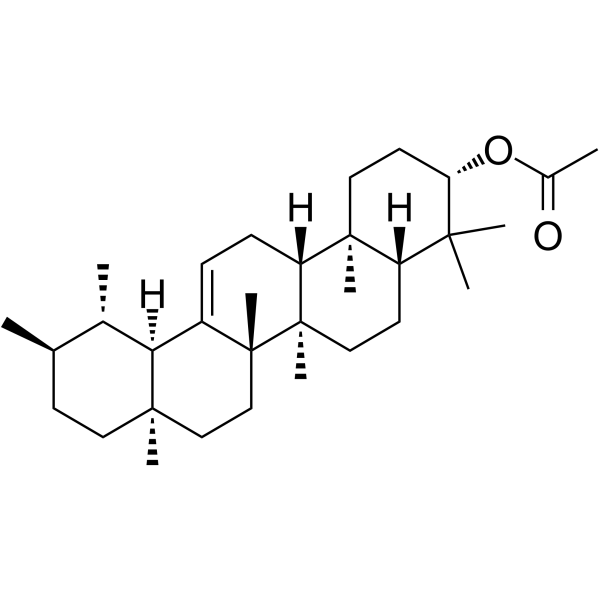
-
GC63268
α-Amyrin palmitate
α-Amyrin palmitate is isolated from Santalum album (sandalwood).
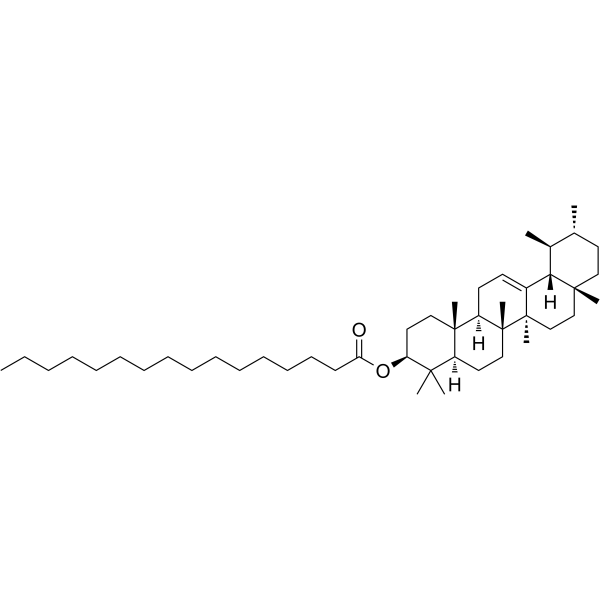
-
GC26093
α-Conotoxin GI
α-Conotoxin GI, a 13-residue peptide originally isolated from the venom of the fish-hunting cone snail Conus geographus, acts as a competitive antagonist for the muscle-type nicotinic acetylcholine receptor (nAChR) with excellent selectivity for α/δ receptor subunit binding over α/γ.
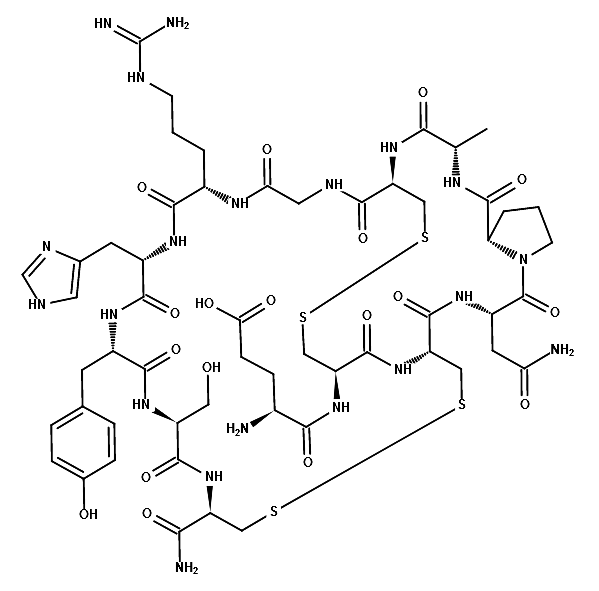
-
GC63269
α-Conotoxin PIA TFA
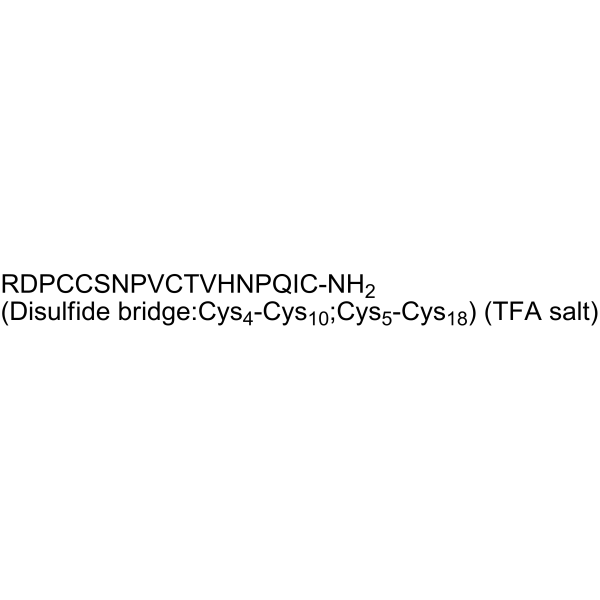
-
GC52338
α-Conotoxin PnIA (trifluoroacetate salt)
α-CtxPnIA, αPnIA
A peptide antagonist of α3β2-subunit containing and α7 nAChRs
-
GC63723
α-Conotoxin PnIA TFA
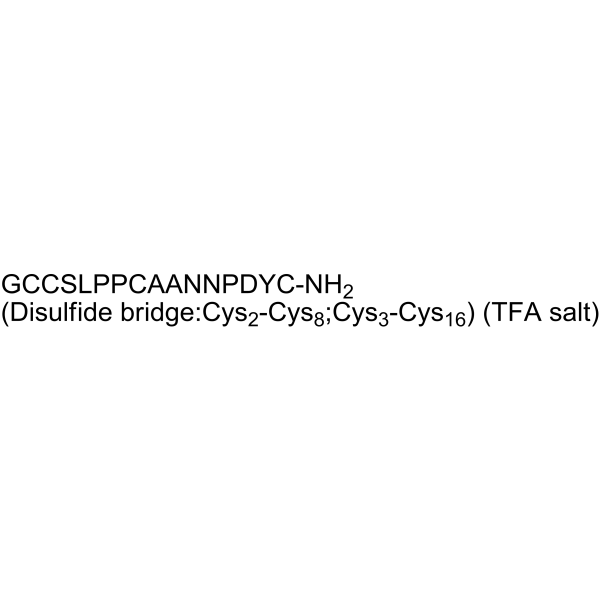
-
GC49838
α-Cortolone
20α-Cortolone, NSC 59872
A metabolite of cortisol
-
GC52253
α-Enolase (1-19)-biotin Peptide
Enolase-1 (1-19)-biotin
A biotinylated α-enolase peptide
-
GC70181
α-Glucosidase-IN-22
Alpha-glucosidase-IN-22 (compound 7i) is a benzimidazole, an effective inhibitor of alpha-glucosidase with an IC50 of 0.64 μM. Alpha-glucosidase-IN-22 is an effective anti-diabetic active molecule with potential for use in type 2 diabetes (T2DM) research.
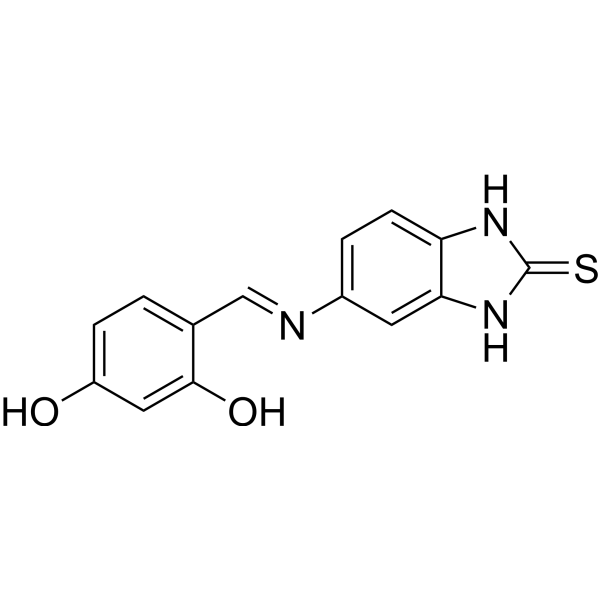
-
GC72710
α-Glucosidase-IN-35
α-Glucosidase-IN-35 (compound 1) is a kind of chromene.

-
GC66088
α-Helical CRF(9-41) TFA
α-Helical CRF(9-41) TFA is a competitive CRF2 receptor antagonist with KB of ~100 nM. α-Helical CRF(9-41) TFA is also a partial agonist of CRF1 receptor with an EC50 of 140 nM.

-
GC67685
α-Isopropylmalate
α-IPM

-
GC63749
α-Lipoic Acid-d5
Thioctic acid-d5; (±)-α-Lipoic acid-d5; DL-α-Lipoic acid-d5
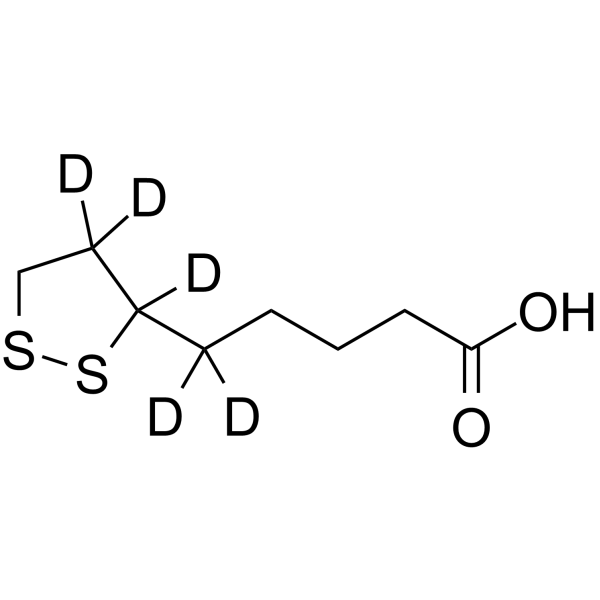
-
GC67540
α-Lipoic acid-NHS
DL-α-Lipoic acid-NHS
α-Lipoic acid-NHS is an alkyl/ether-based PROTAC linker that can be used in the synthesis of PROTACs.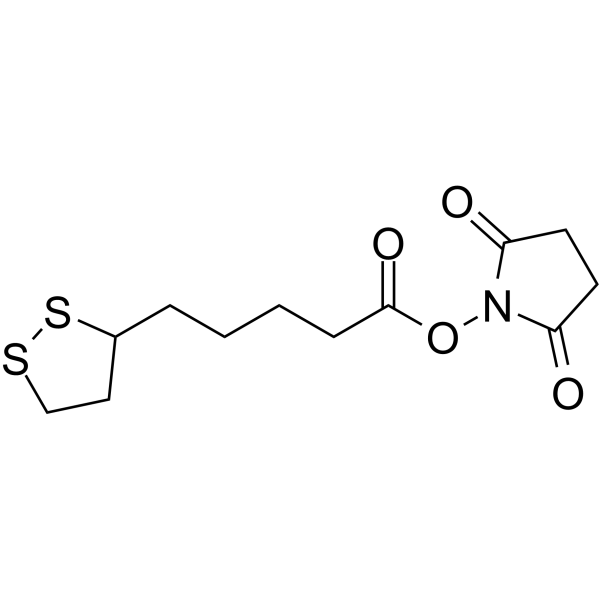
-
GC65892
α-Methyl-p-tyrosine
α-Methyl-p-tyrosine is a competitive inhibitor of the enzyme tyrosine hydroxylase, which converts tyrosine to Levodopa (DOPA). α-Methyl-p-tyrosine is an orally active inhibitor of catecholamine synthesis which inhibits the hydroxylation of tyrosine to DOPA.
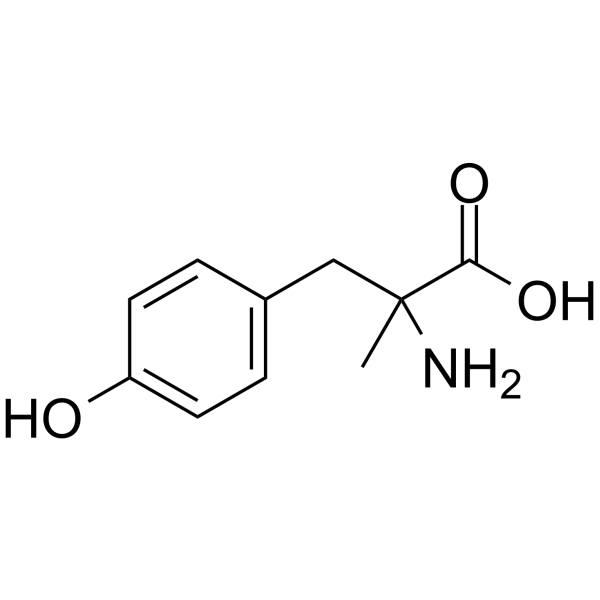
-
GC64563
α-Methylserotonin

-
GC63941
α-Solanine
α-solanine, a bioactive component and one of the major steroidal glycoalkaloids in potatoes, has been observed to inhibit growth and induce apoptosis in cancer cells.
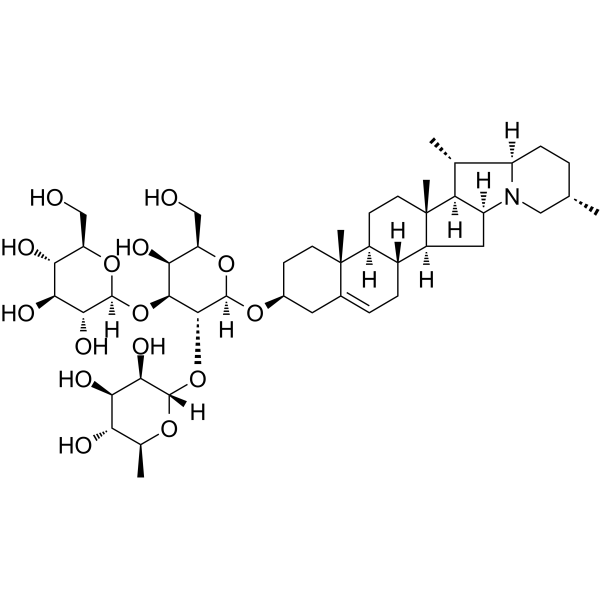
-
GC63615
α-Thujone
α-Thujone is a monoterpene isolated from Thuja occidentalis essential oil with potent anti-tumor activities.
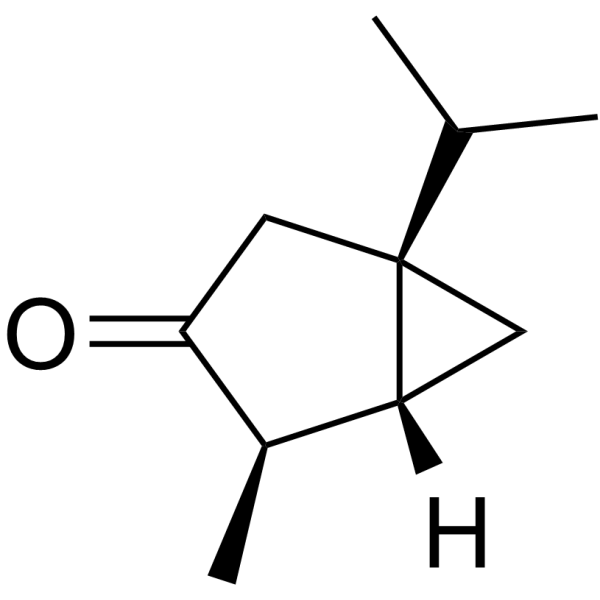
-
GC67618
α-Tocopherol phosphate disodium
alpha-Tocopherol phosphate disodium; TocP disodium; Vitamin E phosphate disodium
α-Tocopherol phosphate (alpha-Tocopherol phosphate) disodium, a promising antioxidant, can protect against long-wave UVA1 induced cell death and scavenge UVA1 induced ROS in a skin cell model. α-Tocopherol phosphate disodium possesses therapeutic potential in the inhibition of apoptosis and increases the migratory capacity of endothelial progenitor cells under high-glucose/hypoxic conditions and promotes angiogenesis.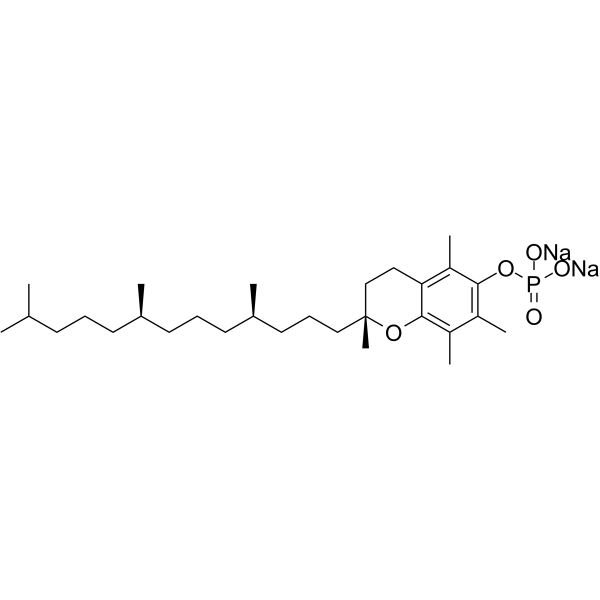
-
GC68390
α5β1 integrin agonist-1
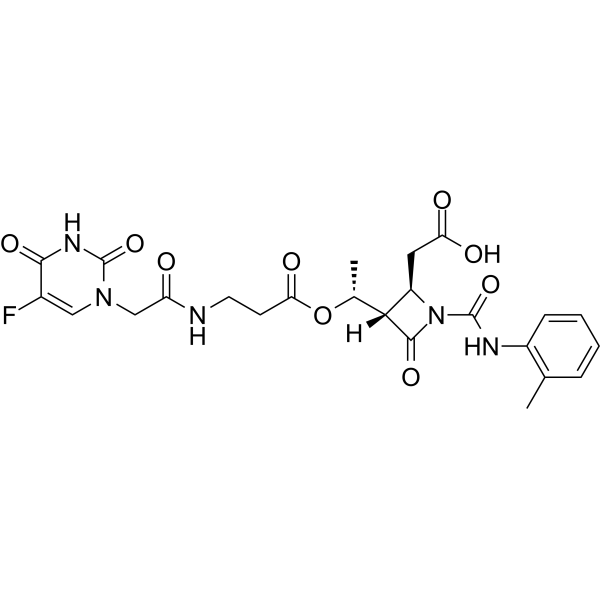
-
GC70953
α7 nAchR-JAK2-STAT3 agonist 1
α7 nAchR-JAK2-STAT3 agonist 1 is a potent α7 nAchR-JAK2-STAT3 agonist, with an IC50 value of 0.32 μM for nitric oxide (NO).

-
GC70179
α7 Nicotinic receptor agonist-1
Alpha-7 Nicotinic receptor agonist-1 (Preparation 5) is an alpha-7 nAChR agonist. It can be used for research on psychiatric disorders such as schizophrenia, mania or bipolar disorder, and anxiety disorders, as well as intellectual disabilities such as Alzheimer's disease, learning deficits, cognitive impairments, attention deficits, memory loss, Lewy body dementia and attention deficit hyperactivity disorder.
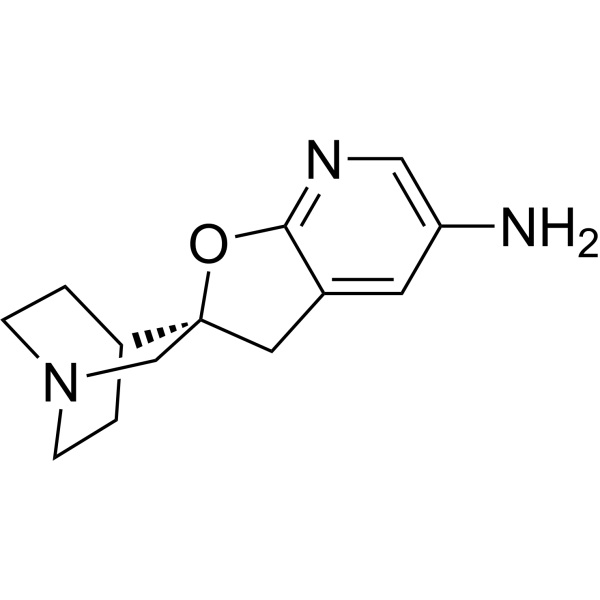
-
GC64932
αvβ5 integrin-IN-1
αvβ5 integrin-IN-1 is a first potent and selective αvβ5 integrin inhibitor (pIC50 = 8.2) .
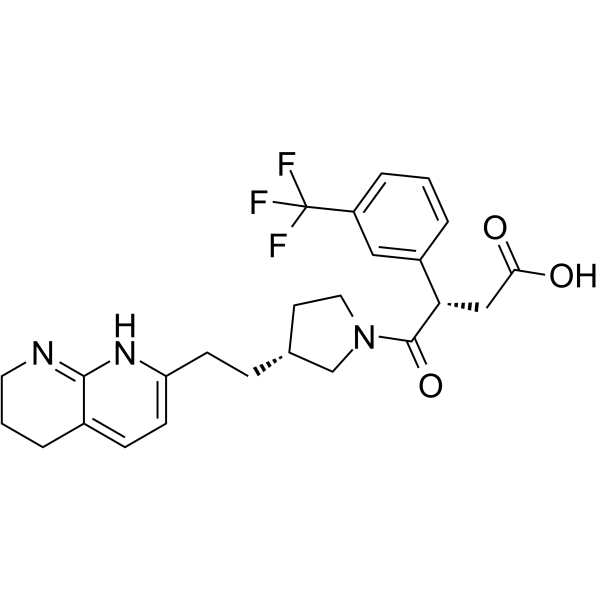
-
GC49467
β-Aescin
A triterpenoid saponin with diverse biological activities

-
GC70787
β-Aminoarteether
β-Aminoarteether (SM934 free base) is an Artemisinin derivative with orally active.

-
GC63273
β-Amyloid (1-14),mouse,rat

-
GC66089
β-Amyloid (1-40) (TFA)
Amyloid Beta-Peptide (1-40) (human) TFA; Amyloid β-Peptide (1-40) (human) TFA
β-Amyloid (1-40) TFA is a primary protein in plaques found in the brains of patients with Alzheimer's disease.
-
GC70182
β-Amyloid (1-40), FAM-labeled TFA
Beta-amyloid (1-40), FAM-labeled TFA is a FAM fluorescently labeled beta-amyloid (1-40) peptide (Λex= 492 nm and Λem= 518 nm).

-
GC63274
β-Amyloid (1-42), (rat/mouse) (TFA)
Amyloid β-peptide (1-42) (rat/mouse) TFA

-
GC66416
β-Amyloid (22-35) (TFA)
Amyloid β-Protein (22-35) (TFA)
β-Amyloid 22-35 (Amyloid β-Protein 22-35) TFA, the residues 22-35 fragment ofβ-amyloid protein, has a cytotoxic effect on cultured neurons from the rat hippocampus in serum-free medium. β-Amyloid 22-35 TFA forms aggregates and typical amyloid fibrils resembling those of the β-amyloid protein in neutral buffer solution).
-
GC66346
β-Amyloid (42-1), human TFA
Amyloid β Peptide (42-1)(human) TFA
β-Amyloid (42-1), human TFA is the inactive form of Amyloid β Peptide (1-42). β-Amyloid (42-1), human TFA is a 42-amino acid peptide which plays a key role in the pathogenesis of Alzheimer disease.
-
GC71998
β-Amyrin acetate
β-Amyrin acetate is a triterpenoid with potent anti-inflammatory, antifungal, anti-diabetic, anti-perlipidemic activities.

-
GC66340
β-Amyrone
β-Amyron
β-Amyrone (β-Amyron) is a triterpene compound which has anti-inflammatory activity through inhibiting the expression of COX-2. β-Amyrone has antifungal activity , as well as antiviral activity against Chikungunya virus. β-Amyrone also inhibits α-glucosidase and acetylcholinesterase (AChE) activity. β-Amyrone can be used in the research of disease like inflammation, infection, and obesity.
-
GC71980
β-Caryophyllene-d2
β-Caryopllene-d2 is deuterium labeled β-Caryopllene.

-
GC63275
β-Cryptoxanthin
β-Cryptoxanthin ((3R)-β-Cryptoxanthin), isolated from Satsuma mandarin orange, is an oxygenated carotenoid and a potent antioxidant.
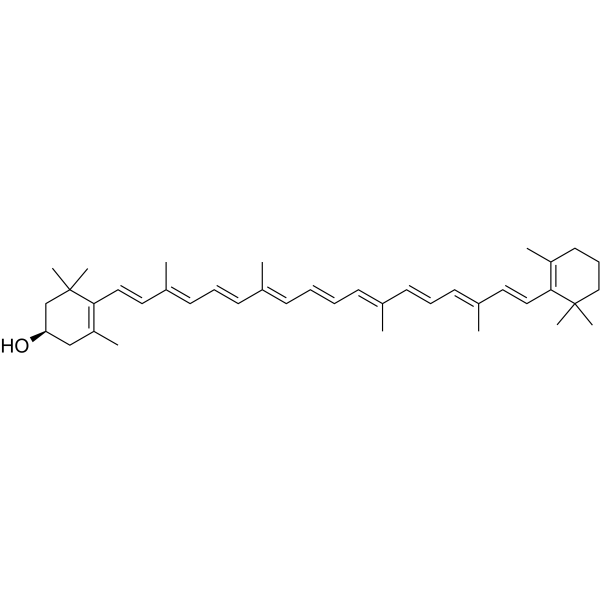
-
GC63276
β-Cyclocitral
β-Cyclocitral, a volatile oxidized derivative of β-carotene, is a grazer defence signal unique to the Cyanobacterium Microcystis.
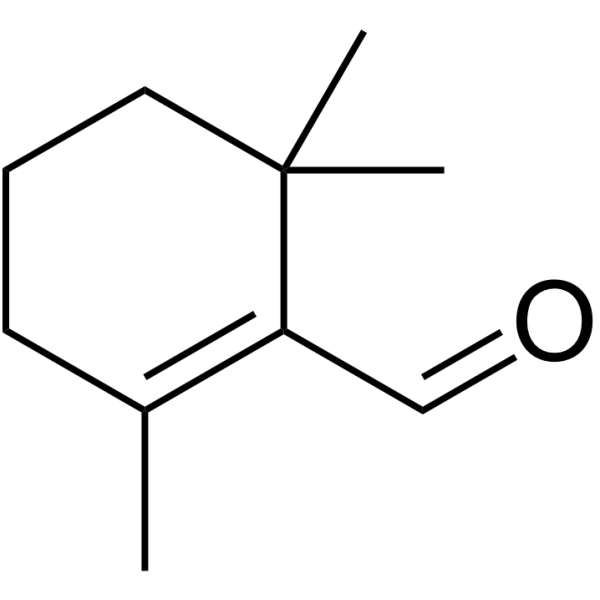
-
GC63277
β-Cyclogeraniol
β-Cyclogeraniol is a natural odour compound.
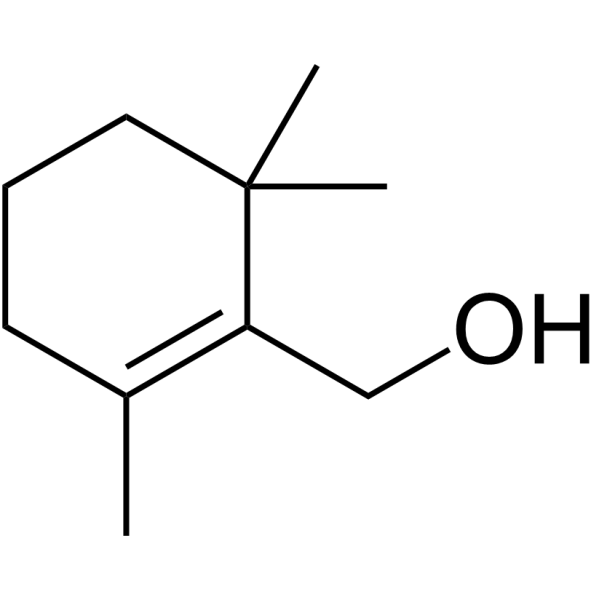
-
GC66870
β-D-Glucan
β-D-glucan is a natural non-digestible polysaccharide and high biocompatibility that can be selectively recognized by recognition receptors such as Dectin-1 and Toll-like receptors as well as being easily internalized by murine or human macrophages, which is likely to attribute to a target delivery. β-d-glucan is an enteric delivery vehicle for probiotics.
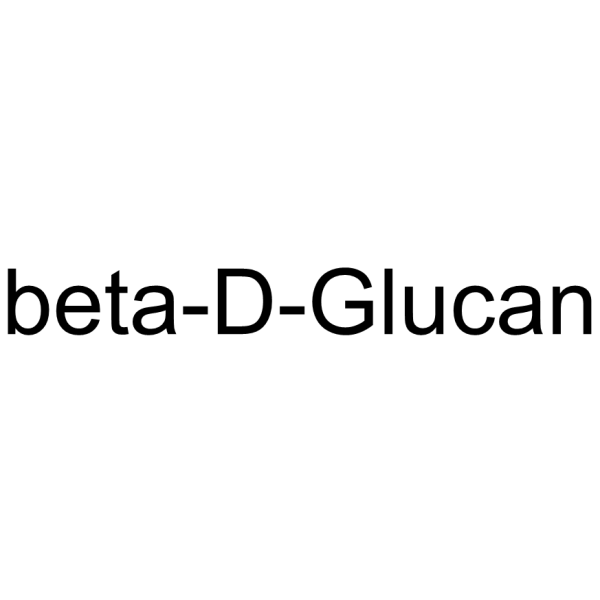
-
GC63278
β-D-Glucose pentaacetate
β-D-Glucose Pentaacetate (Penta-O-acetyl-β-D-glucopyranose) is used in biochemical reaction.
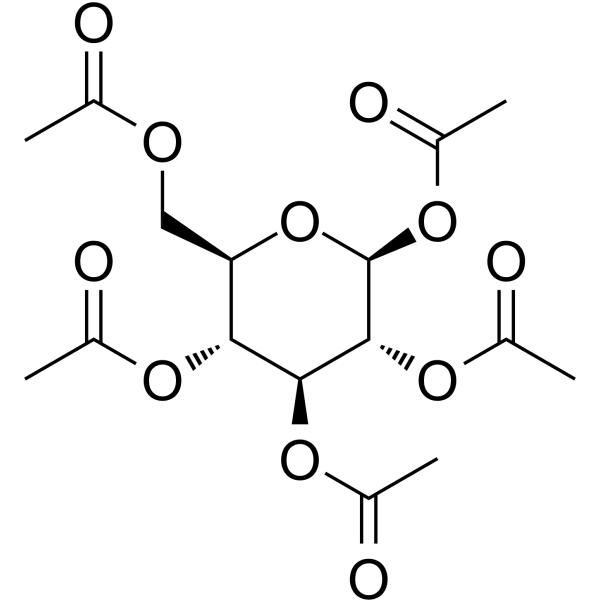
-
GC66750
β-D-glucuronide-pNP-carbonate
β-D-glucuronide-pNP-carbonate is a cleavable ADC linker used in the synthesis of antibody-drug conjugates (ADCs).
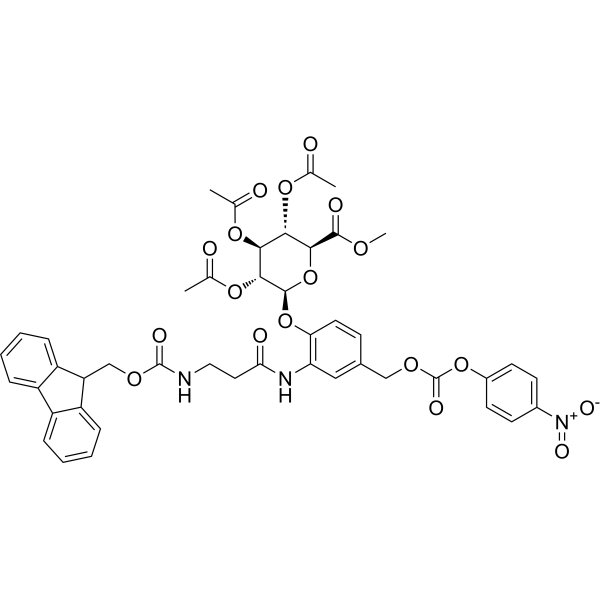
-
GC52494
β-Endorphin (rat) (trifluoroacetate salt)
An opioid neuropeptide

-
GC66512
β-Estradiol-6-one 6-(O-carboxymethyloxime)
β-Estradiol-6-one 6-(O-carboxymethyloxime) is an alkyl chain-based PROTAC linker that can be used in the synthesis of PROTACs.
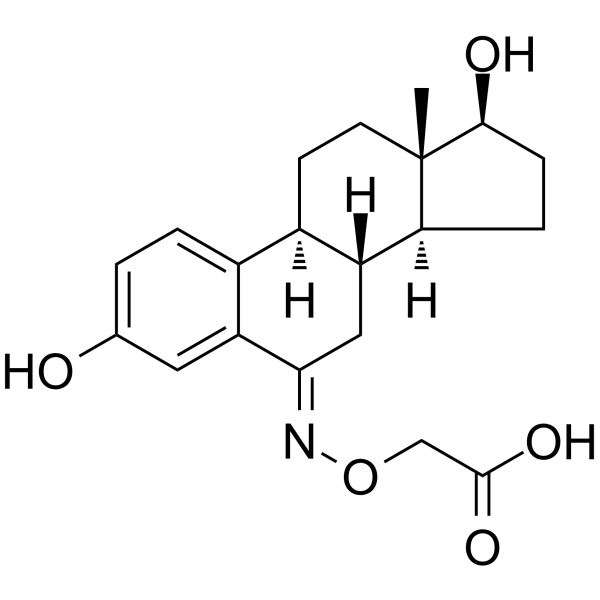
-
GC49769
β-Glucogallin
1-O-Galloyl-β-D-glucose
A plant metabolite and an aldose reductase 2 inhibitor
-
GC64430
β-Glucuronidase-IN-1
β-Glucuronidase-IN-1 is a potent, selective, uncompetitive, and orally active E.
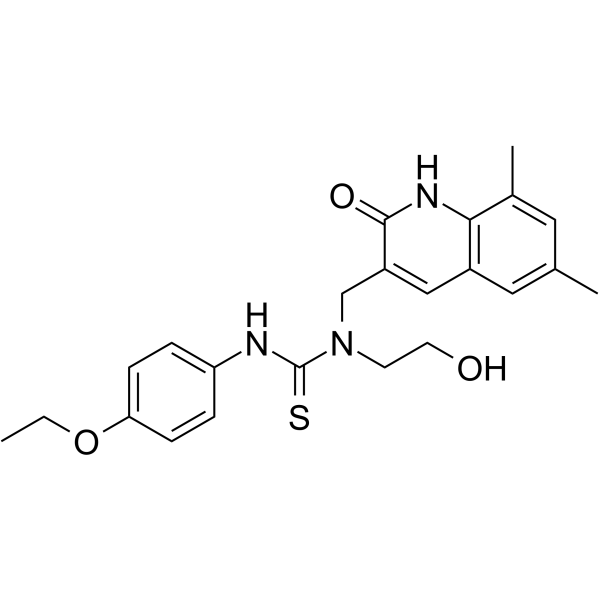
-
GC49890
β-Glycerophosphate-d5 (sodium salt hydrate)
Glycerol 2-Phosphate-d5
An internal standard for the quantification of β-glycerophosphate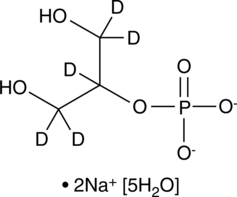
-
GC49647
β-Hyodeoxycholic Acid (hydrate)
3β,6α-dihydroxy-5β-Cholan-24-oic Acid, isoHDCA, Isohyodeoxycholic Acid
A 3β epimer of hyodeoxycholic acid
-
GC64619
β-Ionone
β-Ionone is effective in the induction of apoptosis in gastric adenocarcinoma SGC7901 cells. Anti-cancer activity.
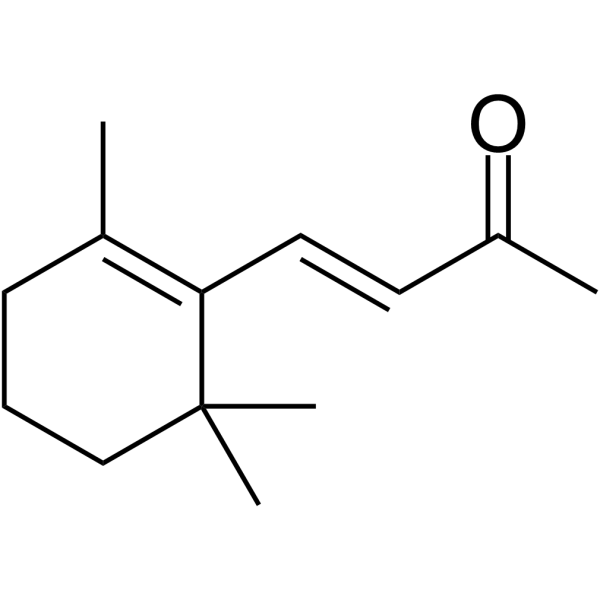
-
GC66842
β-Methylcrotonyl coenzyme A lithium
β-Methylcrotonyl coenzyme A lithium is an intermediate in leucine metabolism and can be used as a substrate to study the specificity and kinetics of β-methylcrotonyl coenzyme A carboxylase (MCCase).
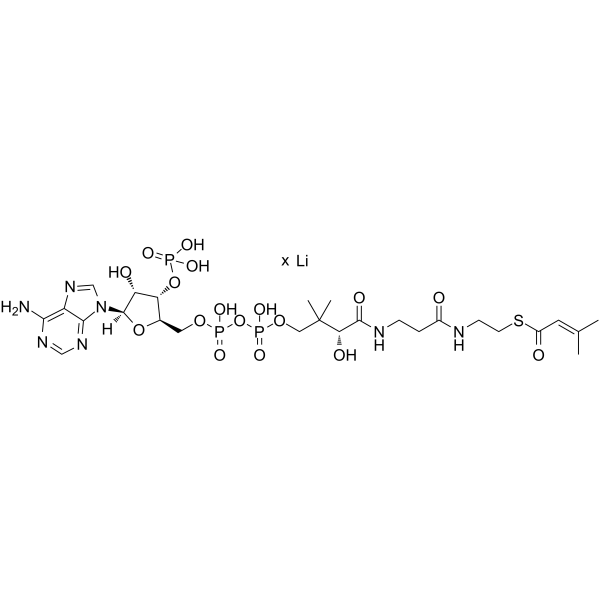
-
GC70184
β-Naphthoflavone-CH2-Br
β-NF-CH2-Br
Beta-naphthoflavone-CH2-Br is an aryl hydrocarbon receptor (AhR) ligand. It is used in the synthesis of PROTAC Beta-NF-JQ1.
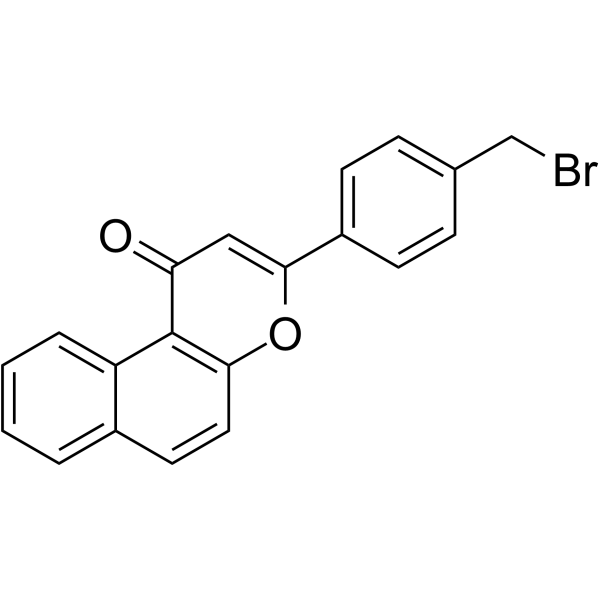
-
GC67484
β-Nicotinamide adenine dinucleotide reduced dipotassium
β-Nicotinamide adenine dinucleotide reduced dipotassium is an orally active reduced coenzyme. β-Nicotinamide adenine dinucleotide reduced dipotassium is a donor of ADP-ribose units in ADP-ribosylaton reactions and a precursor of cyclic ADP-ribose. β-Nicotinamide adenine dinucleotide reduced dipotassium plays a role as a regenerative electron donor in cellular energy metabolism, including glycolysis, β-oxidation and the tricarboxylic acid (TCA) cycle.
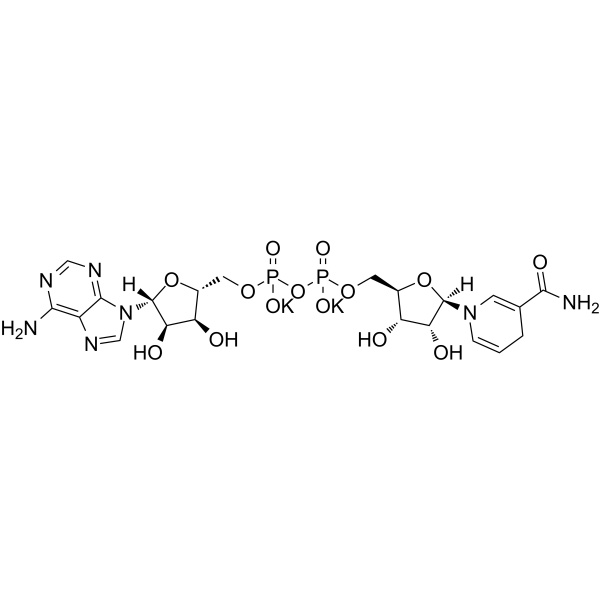
-
GC70185
β-Sitostenone
δ4-Sitosterol-3-one; β-Rosasterol oxide
Beta-sitostenone is a sterol isolated from Cochlospermum vitifolium. It can inhibit the activity of tyrosinase and has anti-melanogenesis and anti-tumor activities.

-
GC70650
γ-Acetylenic GABA hydrochloride
γ-Acetylenic GABA (GAG) drochloride is an irreversible inhibitor of GABA-transaminase.

-
GC64508
γ-Aminobutyric acid-d6
γ-Aminobutyric acid-d6 (4-Aminobutyric acid-d6) is the deuterium labeled γ-Aminobutyric acid.

-
GC49865
γ-D-Glutamylglycine (trifluoroacetate salt)
γ-DGG
An excitatory amino acid antagonist
-
GC52400
γ-Glu-Ala (trifluoroacetate salt)
γ-Glutamylalanine, γ-L-Glutamyl-L-alanine
A dipeptide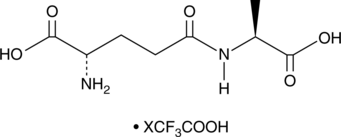
-
GC63279
γ-Glu-Gly TFA

-
GC52404
γ-Glu-Phe (trifluoroacetate salt)
γ-Glutamylphenylalanine
A dipeptide with metabolism-altering activity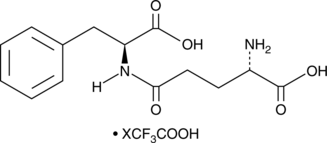
-
GC70186
γ-Glutamylornithine
Gamma-glutamylornithine is a urine excretion product of patients with HHH syndrome (hyperuricemia, hyperammonemia, and homocitrullinuria) and patients with uric acid-related recurrent ataxia. Increased endogenous ornithine levels lead to an increase in gamma-glutamylornithine levels in the urine.

-
GC63280
γ-Hexalactone
γ-Hexalactone is a gamma-lactone found in ripe fruits.
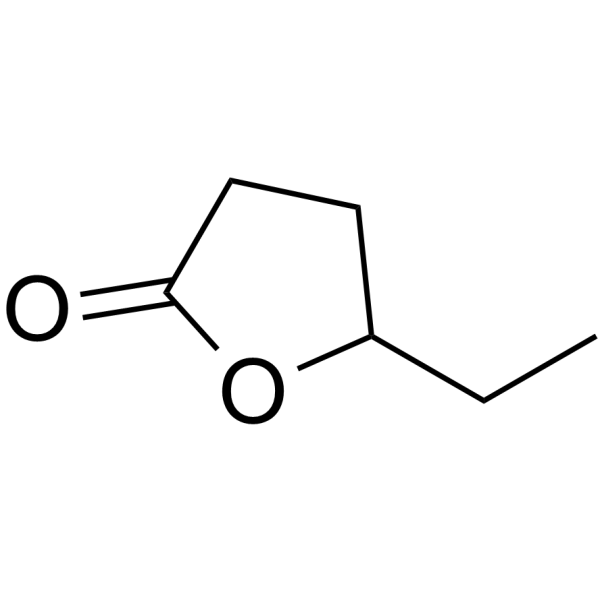
-
GC66048
δ-Secretase inhibitor 11
δ-Secretase inhibitor 11 (compound 11) is an orally active, potent, BBB-penetrated, non-toxic, selective and specific δ-secretase inhibitor, with an IC50 of 0.7 μM. δ-Secretase inhibitor 11 interacts with both the active site and allosteric site of δ-secretase. δ-Secretase inhibitor 11 attenuates tau and APP (amyloid precursor protein) cleavage. δ-Secretase inhibitor 11 ameliorates synaptic dysfunction and cognitive impairments in tau P301S and 5XFAD transgenic mouse models. δ-Secretase inhibitor 11 can be used for Alzheimer's disease research.
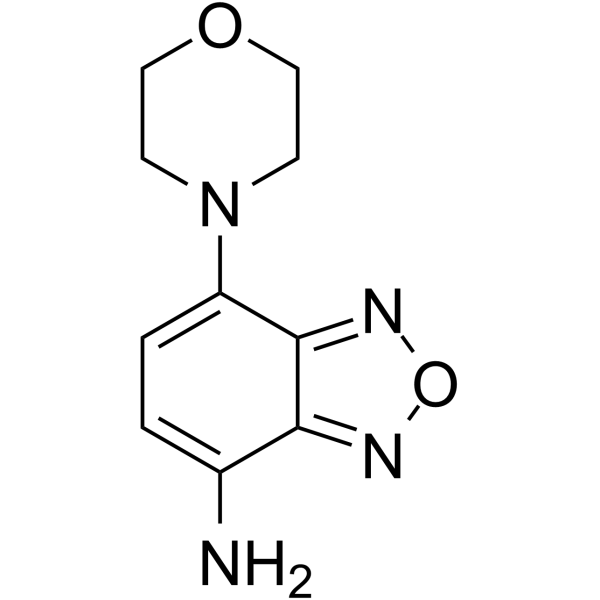
-
GC70188
ω-Agatoxin IVA TFA
ω-Agatoxin IVA TFA is an effective selective blocker of P/Q-type Ca2+ (Cav2.1) channels, with IC50 values of 2 nM and 90 nM for P-type and Q-type Ca2+ channels, respectively. ω-Agatoxin IVA TFA (IC50, 30-225 nM) inhibits high potassium-induced glutamate release and calcium influx. It also blocks the release of serotonin and adrenaline induced by high potassium, without affecting L-type or N-type calcium channels.
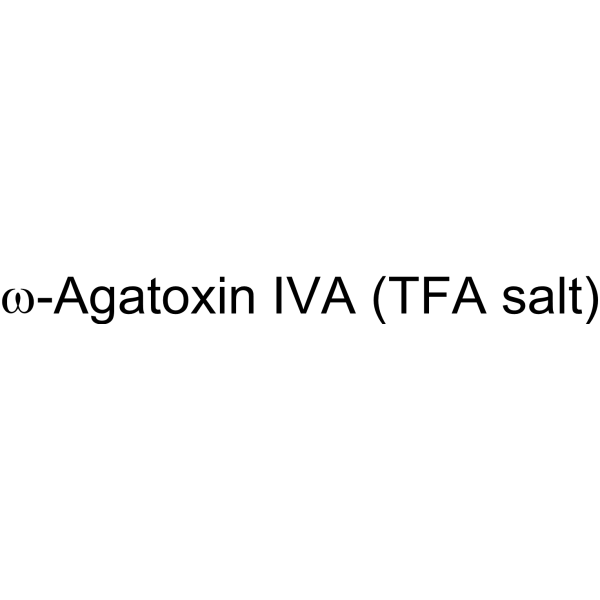
-
GC64899
ω-Conotoxin MVIIC TFA
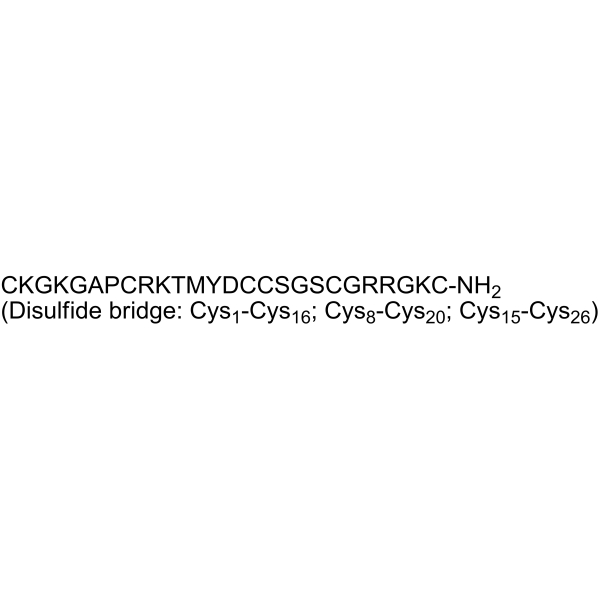
-
GC63281
ω-Pentadecalactone
ω-Pentadecalactone is a fragrance ingredient.

-
GC70556
ß-pBrPh-Glc
β-pBrPh-Glc is a small-molecule ice recrystallization inhibitor.

-
GC67191
(±)-α-Tocopherol nicotinate
(±)-α-Tocopherol nicotinate, vitamin E - nicotinate, is an orally active fat-soluble antioxidant that prevents lipid peroxidation in cell membranes. (±)-α-Tocopherol nicotinate is hydrolysed in the blood to α -tocopherol and niacin and may be used in studies of related vascular diseases.
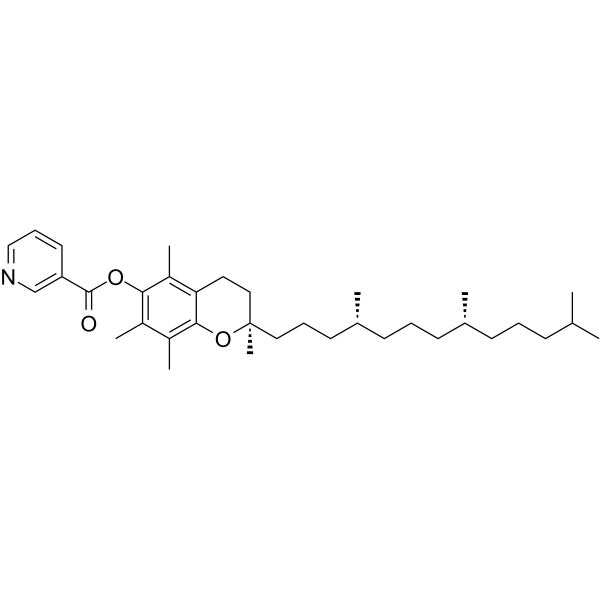
-
GC52010
(±)-10-hydroxy-12(Z),15(Z)-Octadecadienoic Acid
αHYA, (±)-10-hydroxy-12(Z),15(Z)-ODE
An oxylipin gut microbiota metabolite
-
GC52013
(±)-10-hydroxy-12(Z)-Octadecenoic Acid
10-hydroxy-cis-12-Octadecenoic Acid
An oxylipin and metabolite of linoleic acid
-
GC52421
(±)-10-hydroxy-12(Z)-Octadecenoic Acid-d5
10-hydroxy-cis-12-Octadecenoic Acid-d5
An internal standard for the quantification of (±)-10-hydroxy-12(Z)-octadecenoic acid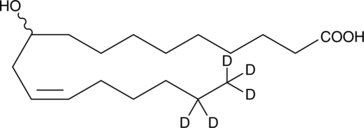
-
GC52260
(±)-Cenobamate
An Analytical Reference Standard

-
GC72625
(±)-Coniine hydrochloride
(±)-Coniine drochloride (2-Propylpiperidine drochloride) is a potent nAChR agonist with an EC50 value of 0.3 mM.

-
GC49515
(±)-Ibuprofen-d3 (sodium salt)
DL-Ibuprofen-d3
An internal standard for the quantification of (±)-ibuprofen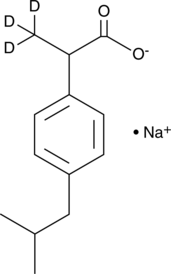
-
GC65599
(±)-Leucine-d10

-
GC52224
(±)-MMT5-14
A derivative of remdesivir with antiviral activity

-
GC49875
(±)-N-desmethyl Venlafaxine (hydrochloride)
Wy 45494
A minor active metabolite of venlafaxine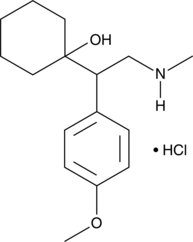
-
GC49482
(±)-Nornicotine-d4
DL-Nornicotine-d4, (R,S)-Nornicotine-d4
An internal standard for the quantification of (±)-nornicotine
-
GC67928
(±)-Stylopine hydrochloride
Tetrahydrocoptisine hydrochloride

-
GC64007
(±)-U-50488 hydrate hydrochloride
(±)-Trans-(1R,2R)-U-50488 hydrate hydrochloride

-
GC67681
(αR,8aS)-GSK1614343
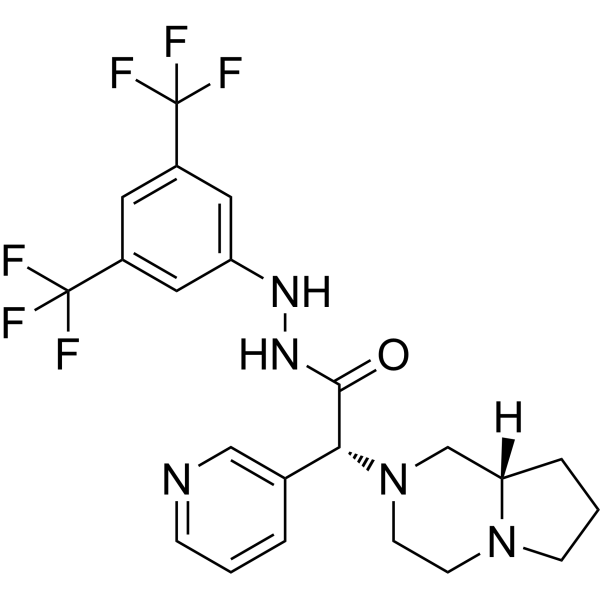
-
GN10155
(+)- Corydaline
(+)-Corydaline, D-Corydaline, NSC 406036
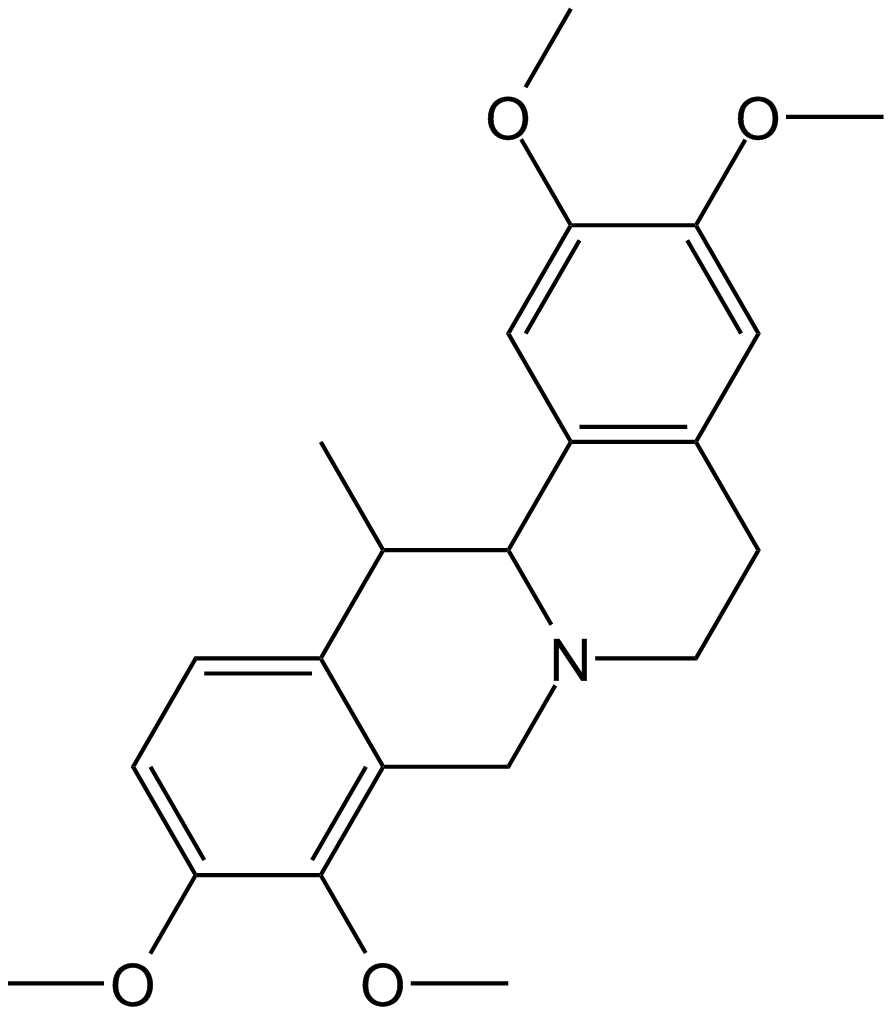
-
GN10612
(+)- Praeruptorin C

-
GN10745
(+)-Bicuculline
NSC 32192
(+)-Bicucline ((+)-Bicucline )) is a competitive GABAA receptor antagonist with an IC50 of 2μM.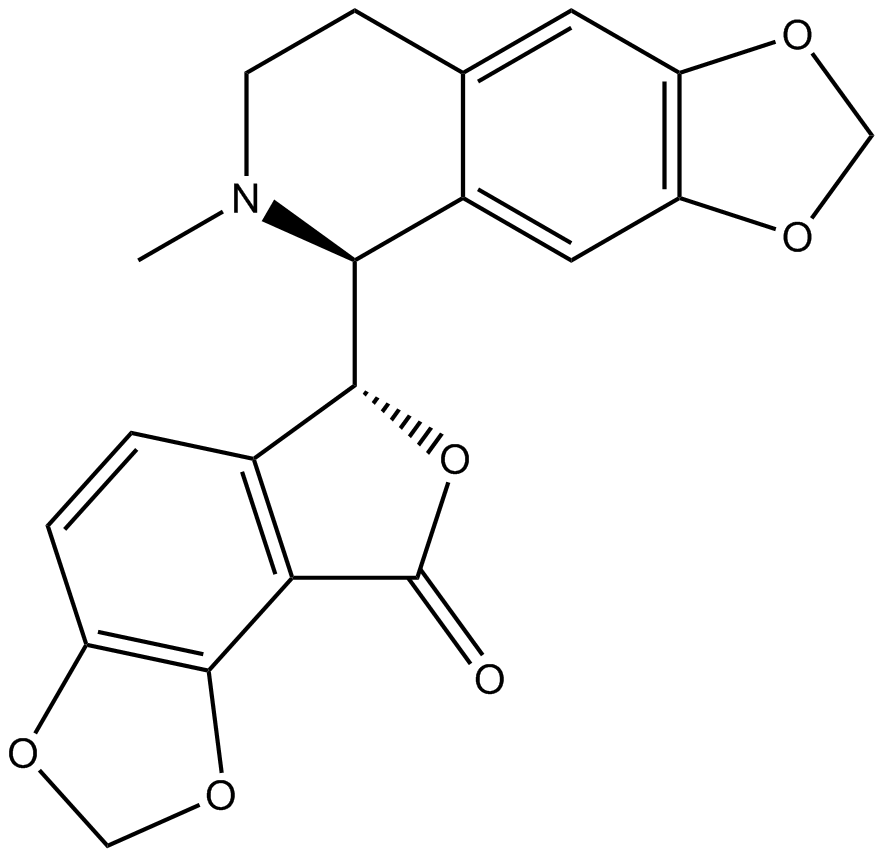
-
GC64752
(+)-Biotin-ONP
(+)-Biotin 4-nitrophenyl ester
(+)-Biotin-ONP is an alkyl chain-based PROTAC linker that can be used in the synthesis of PROTACs.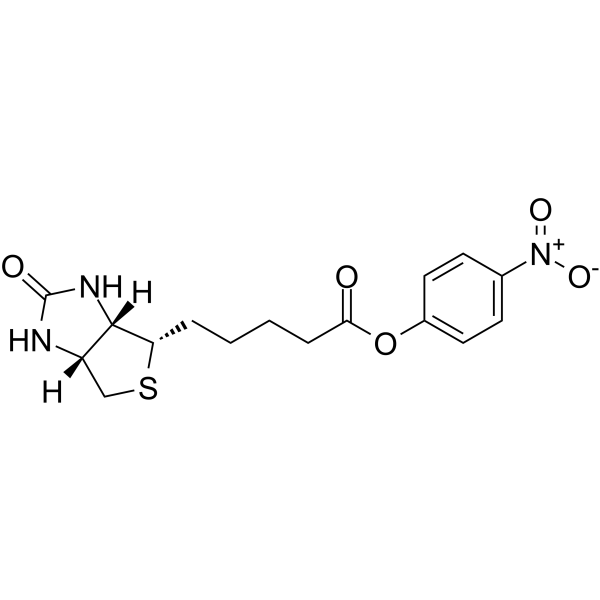
-
GC66864
(+)-Biotin-PEG2-hydrazide
(+)-Biotin-PEG2-hydrazide is a PEG-based PROTAC linker that can be used in the synthesis of PROTACs.
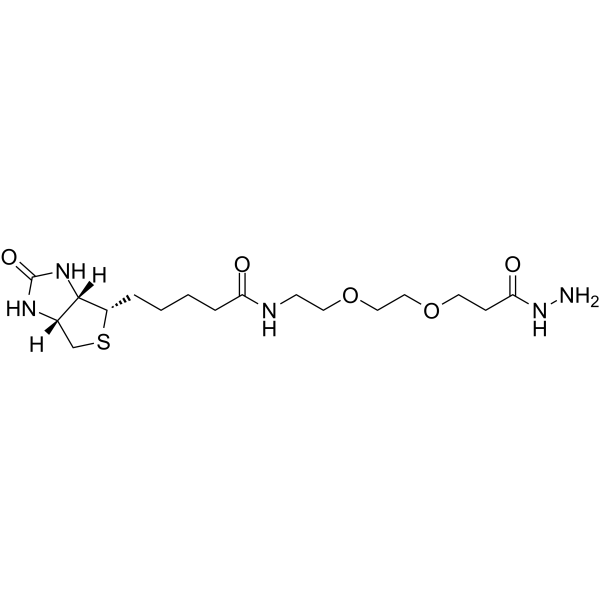
-
GC66692
(+)-Biotin-SLC
(+)-Biotin-SLC is an alkyl chain-based PROTAC linker that can be used in the synthesis of PROTACs.
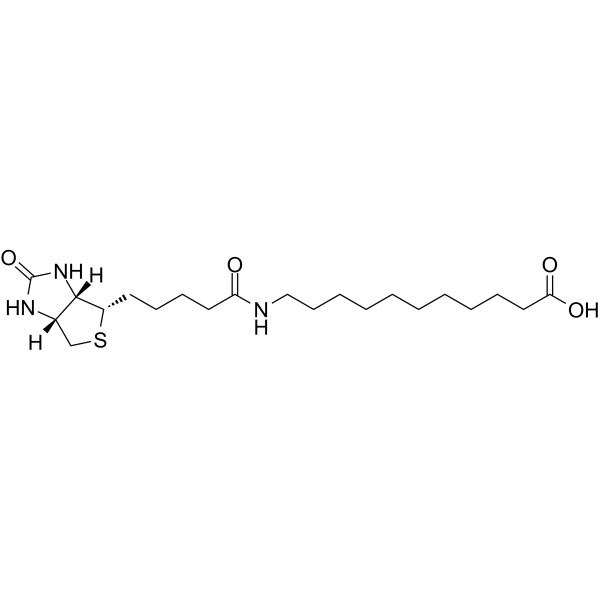
-
GN10605
(+)-Catechin hydrate
D-(+)-Catechin, Catechuic Acid, Cyanidol
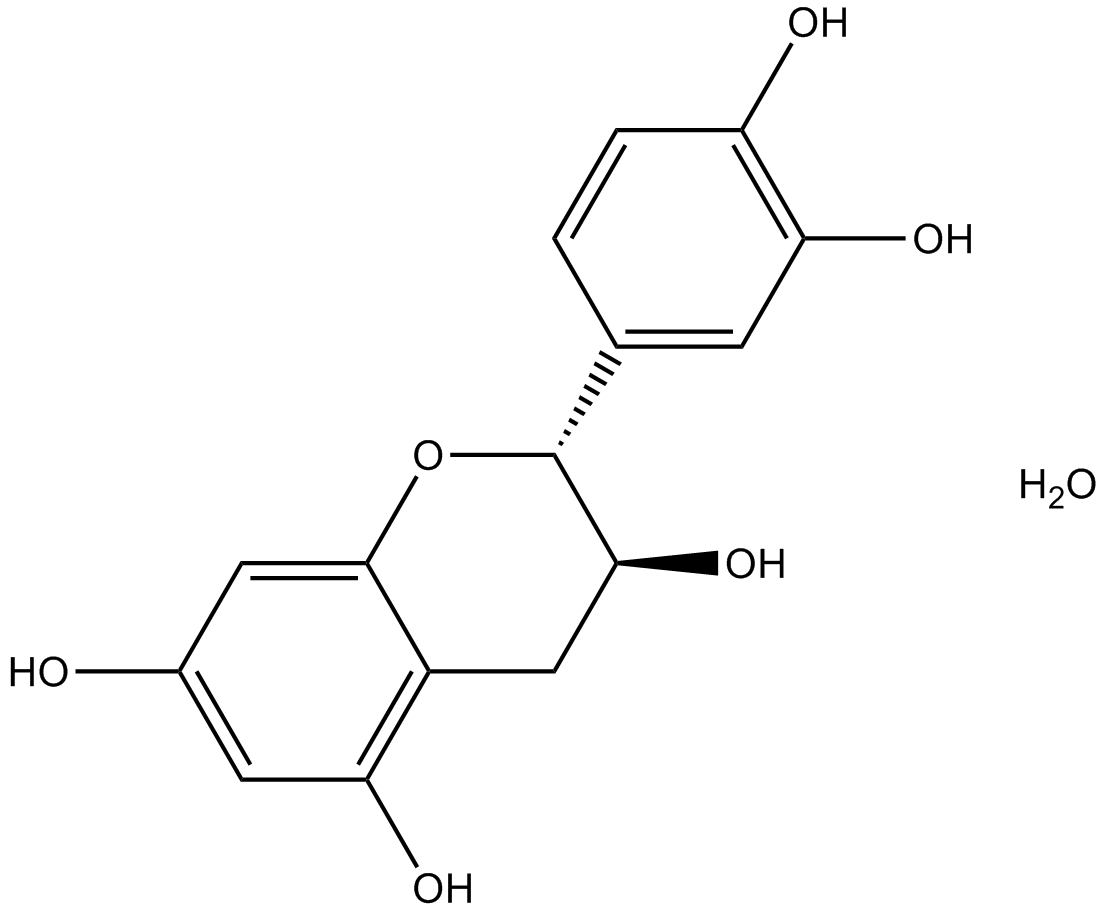
-
GC63999
(+)-Coclaurine hydrochloride
(+)-(R)-Coclaurine hydrochloride; (R)-Coclaurine hydrochloride; d-Coclaurine hydrochloride
(+)-Coclaurine ((+)-(R)-Coclaurine) hydrochloride, benzyltetrahydroisoquinoline alkaloid isolated from a variety of plant sources.
-
GN10654
(+)-Corynoline
(+)-Corynoline, 13-methyl-Chelidonine, CRL, (d)-Corynoline
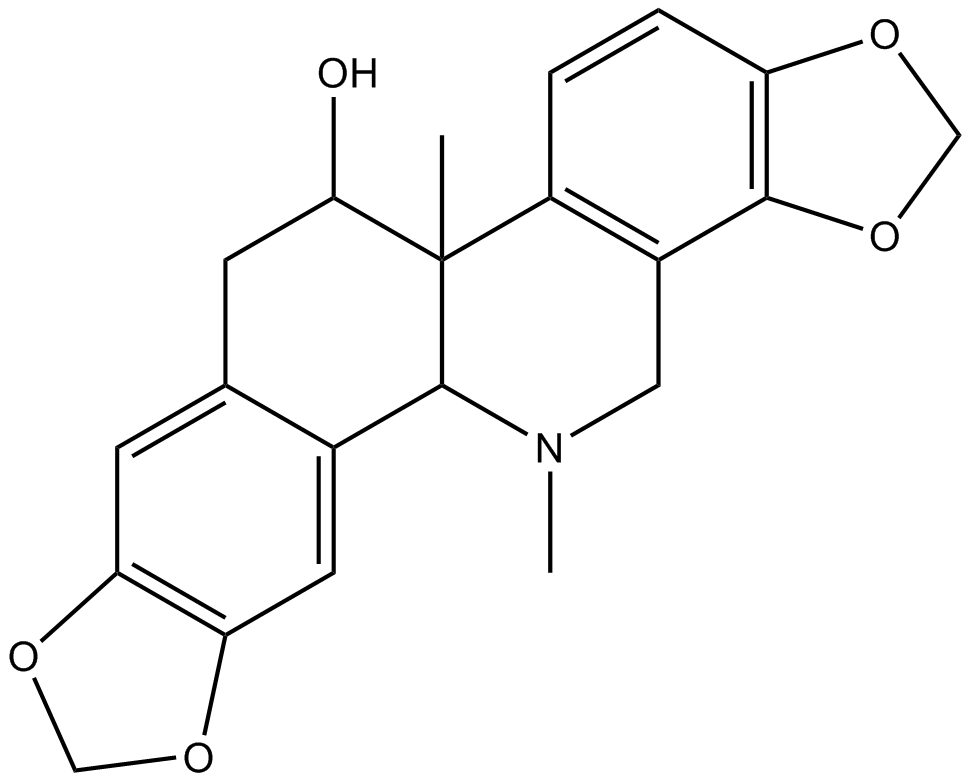
-
GC70265
(+)-EMD 57033
(+)-EMD 57033 is a cardiac troponin C (cTnC) activator, is a dominant Ca2+ sensitizer.

-
GC64207
(+)-JNJ-A07
(+)-JNJ-A07 is a highly potent, orally active pan-serotype dengue virus inhibitor targeting the NS3-NS4B interaction.
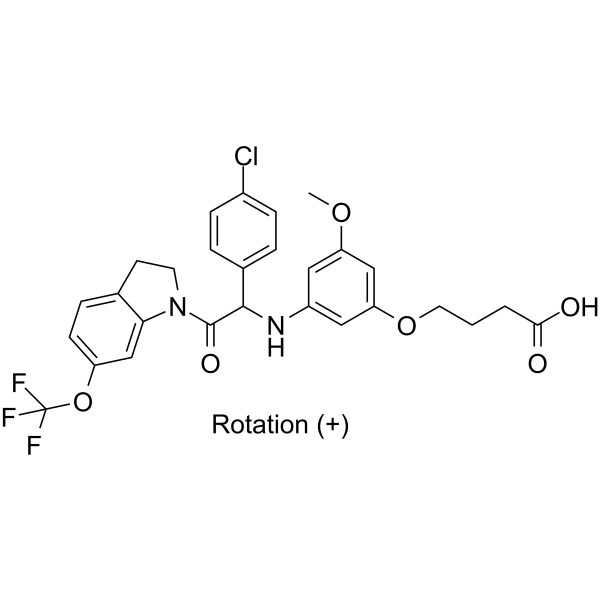
-
GC67931
(+)-Medioresinol
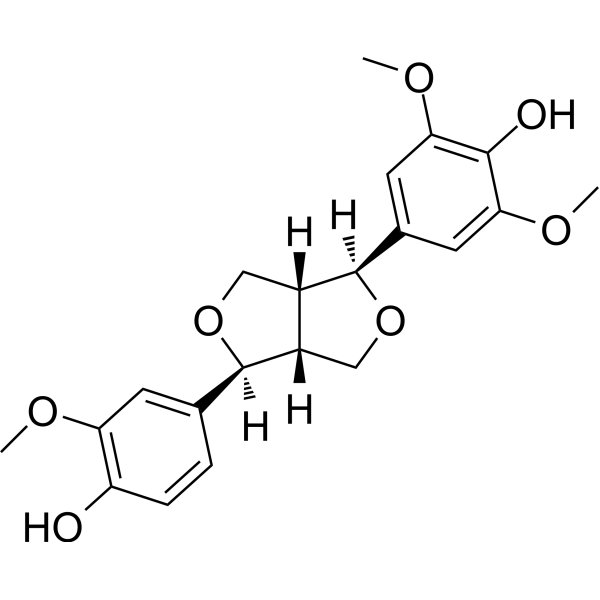
-
GC16616
(+)-MK 801
Dizocilpine maleate;Dizocilpine hydrogen maleate;(+)-MK 801;MK 801
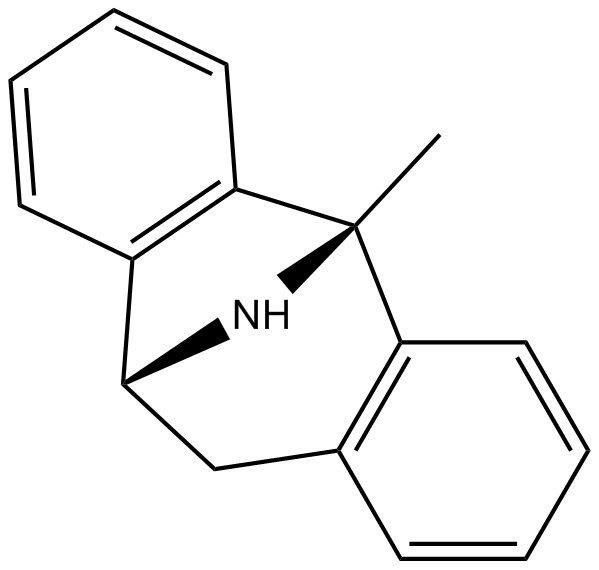
-
GC68210
(+)-Norfenfluramine

-
GC63969
(+)-Schisandrin B
(+)-Schisandrin B is an enantiomer of Schisandrin B.
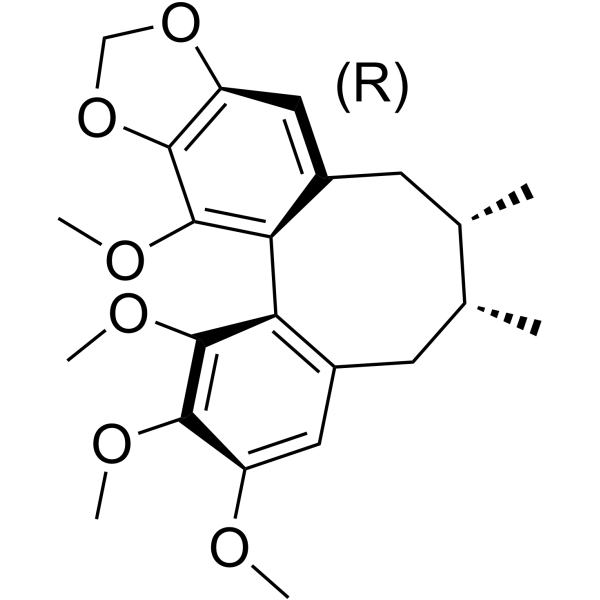
-
GC69720
(+)SHIN2
(+)SHIN2 is a serine hydroxymethyltransferase (SHMT) inhibitor, and its in vivo target can be traced using 13C-serine. (+)SHIN2 increases the survival rate of mice with primary acute T-cell lymphoblastic leukemia (T-ALL) driven by Notch1 and has a synergistic effect with Methotrexate.
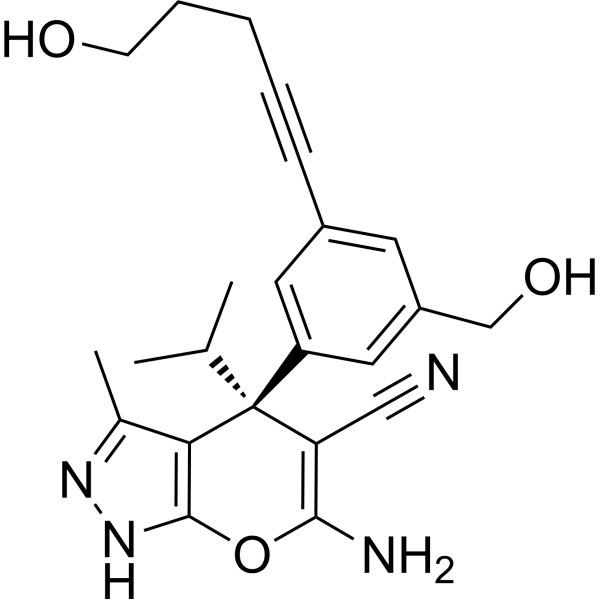
-
GC49502
(-)-β-Sesquiphellandrene
A sesquiterpene with antiviral and anticancer activities
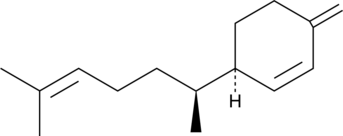
-
GC63940
(-)-Denudatin B
(-)-Denudatin B is an antiplatelet agent.

-
GC14049
(-)-Epigallocatechin gallate (EGCG)
EGCG
(-)-Epigallocatechin Gallate sulfate (EGCG) is a major polyphenol in green tea that inhibits cell proliferation and induces apoptosis.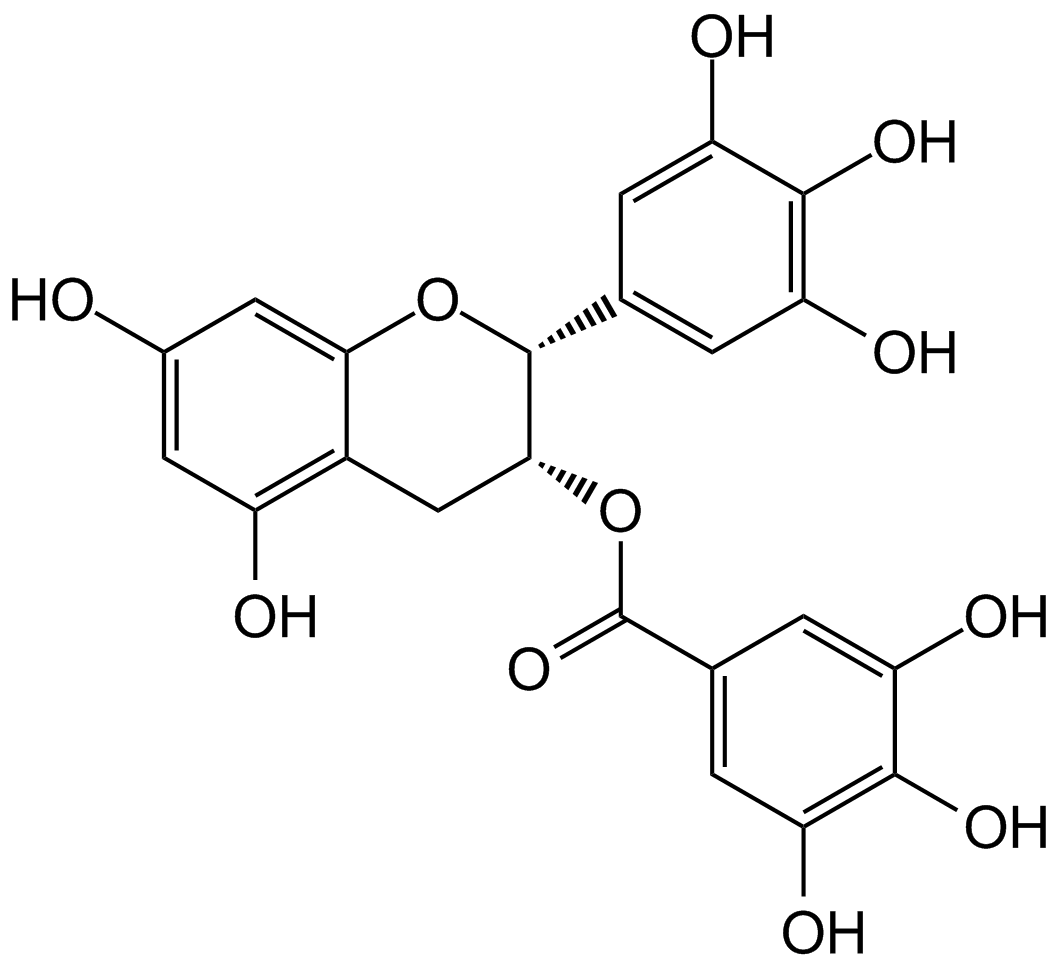
-
GC69463
(-)-GSK598809 hydrochloride
(1S,5R)-GSK598809 hydrochloride
(-)-GSK598809 is an isomer of GSK598809. GSK598809 is a selective antagonist of the dopamine D3 receptor (DRD3).



